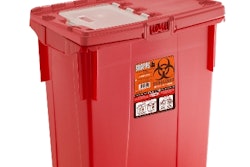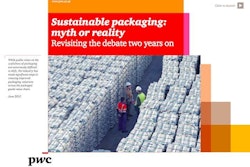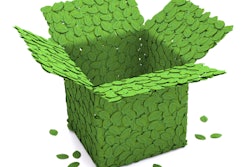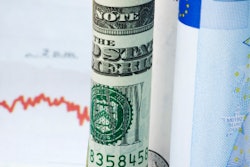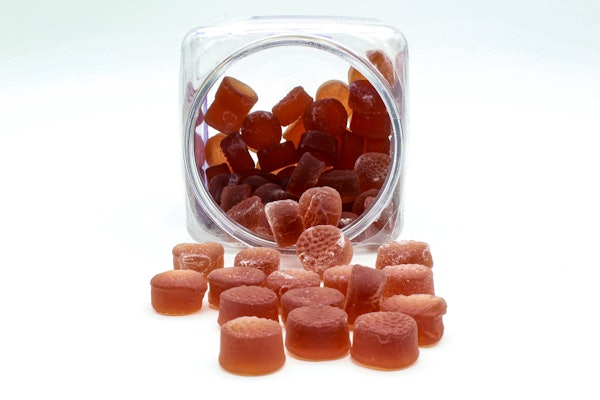
As focus shifts towards reducing carbon emissions, the pharmaceutical industry finds itself facing a dilemma in maintaining strict safety standards while improving its environmental credentials.
In an article, “Cutting Waste in the Cold Chain”, Geraint Thomas, technical director at Laminar Medica wrote: “The suppliers and users of temperature-controlled packaging systems are under increasing pressure to reduce the environmental impact of cold chain shipping. The widespread introduction of formal corporate social responsibility policies, together with new customer expectations and more strict regulations, mean that developing a suitable packaging system is more challenging than ever.”
But can a resource and energy-intensive area like cold chain ever become truly sustainable? The Cold Chain IQ article, “Can the Cold Chain Ever Become Truly Sustainable?” addressed this challenge: “In many countries around the world the idea of an environmentally friendly cold chain is just not viable. This does not represent a lack of commitment to green issues, but more the challenge of establishing even a basic cold chain in the first place.”
Thomas explained the importance of considering how your temperature-controlled packing system impacts on the environment, and suggested approaches for minimizing waste and costs.
“While it might seem at first necessary to reduce the amount of packaging used, it is important to note that under packaging is usually far worse for the environment than over-packaging. Over-packaging by 10 percent means that 10 percent of the resources needed to produce the packaging are wasted, and extra fuel will be needed to distribute it. However, under-packaging that results in the product being spoiled or damaged wastes 100 percent of the resources used to produce both the contents and its packaging, and all the fuel used to distribute it," he said.
Mark Goh, director of industry research, The Logistics Institute of Asia Pacific, told Cold Chain IQ, in order to “go green” in the pharmaceutical cold chain, you must first identify the areas where you can green and which are going to be more amenable.
He said: “I think the low hanging fruit in this case would be the secondary packaging. And today the good news is there are smart, astute service providers out there in the marketplace focusing on making sure that packaging is reusable and particularly in the area of secondary packaging.”
Goh commented on the fact that we are already seeing investment by logistics providers in this area. “Good service providers in logistics, such as UPS and DHL in fact have invested good money into this area. One example that UPS is doing is to look at the end of life of products and packaging. If done correctly it goes along way to recapture much of what we produce and not really consume directly. Today in the context of Asia, there are legislations that are driving the use for reusable packaging more so than the customers or the companies themselves, and that is a good sign,” he continued.
However, there are still many doubts as to how green the pharmaceutical cold chain can be. “Personally I doubt if we could have an entire green cold chain from source to point of supply. Certain links can certainly be greener than others. The biggest challenge would be to have green vehicles, which often form at least three links in the chain,” John Ackerman, chairman South African Refrigerated Distribution Assn., said to Pharma IQ.
The participants where asked to pinpoint three main solutions in which their organization was investing to improve the temperature-controlled supply chain.
The balancing act of reducing the environmental impact of pharmaceutical cold chain distribution while reducing cost is growing in importance among all stakeholders.
Building a robust, green pharmaceutical cold chain is not just about the packaging. Installation of renewable energy technology at the warehouse and utilising alternative fuels during distribution are also avenues being explored for reducing the supply chain's carbon footprint.
This exploration looks set to continue as companies seek to implement green strategies efficiently and that can ultimately reduce cost.
Article contributed by Andrea Charles, Cold Chain IQ editor. Healthcare Packaging magazine recently signed a marketing partnership with global events producer IQPC to expand each organization's reach into the cold chain packaging and logistics marketplace. The agreement will include coverage of the 10th Anniversary Cold Chain & Temperature Management Global Forum event in Chicago Sept. 24-28, 2012.
In an article, “Cutting Waste in the Cold Chain”, Geraint Thomas, technical director at Laminar Medica wrote: “The suppliers and users of temperature-controlled packaging systems are under increasing pressure to reduce the environmental impact of cold chain shipping. The widespread introduction of formal corporate social responsibility policies, together with new customer expectations and more strict regulations, mean that developing a suitable packaging system is more challenging than ever.”
But can a resource and energy-intensive area like cold chain ever become truly sustainable? The Cold Chain IQ article, “Can the Cold Chain Ever Become Truly Sustainable?” addressed this challenge: “In many countries around the world the idea of an environmentally friendly cold chain is just not viable. This does not represent a lack of commitment to green issues, but more the challenge of establishing even a basic cold chain in the first place.”
Thomas explained the importance of considering how your temperature-controlled packing system impacts on the environment, and suggested approaches for minimizing waste and costs.
“While it might seem at first necessary to reduce the amount of packaging used, it is important to note that under packaging is usually far worse for the environment than over-packaging. Over-packaging by 10 percent means that 10 percent of the resources needed to produce the packaging are wasted, and extra fuel will be needed to distribute it. However, under-packaging that results in the product being spoiled or damaged wastes 100 percent of the resources used to produce both the contents and its packaging, and all the fuel used to distribute it," he said.
Mark Goh, director of industry research, The Logistics Institute of Asia Pacific, told Cold Chain IQ, in order to “go green” in the pharmaceutical cold chain, you must first identify the areas where you can green and which are going to be more amenable.
He said: “I think the low hanging fruit in this case would be the secondary packaging. And today the good news is there are smart, astute service providers out there in the marketplace focusing on making sure that packaging is reusable and particularly in the area of secondary packaging.”
Goh commented on the fact that we are already seeing investment by logistics providers in this area. “Good service providers in logistics, such as UPS and DHL in fact have invested good money into this area. One example that UPS is doing is to look at the end of life of products and packaging. If done correctly it goes along way to recapture much of what we produce and not really consume directly. Today in the context of Asia, there are legislations that are driving the use for reusable packaging more so than the customers or the companies themselves, and that is a good sign,” he continued.
However, there are still many doubts as to how green the pharmaceutical cold chain can be. “Personally I doubt if we could have an entire green cold chain from source to point of supply. Certain links can certainly be greener than others. The biggest challenge would be to have green vehicles, which often form at least three links in the chain,” John Ackerman, chairman South African Refrigerated Distribution Assn., said to Pharma IQ.
The participants where asked to pinpoint three main solutions in which their organization was investing to improve the temperature-controlled supply chain.
The balancing act of reducing the environmental impact of pharmaceutical cold chain distribution while reducing cost is growing in importance among all stakeholders.
Building a robust, green pharmaceutical cold chain is not just about the packaging. Installation of renewable energy technology at the warehouse and utilising alternative fuels during distribution are also avenues being explored for reducing the supply chain's carbon footprint.
This exploration looks set to continue as companies seek to implement green strategies efficiently and that can ultimately reduce cost.
Article contributed by Andrea Charles, Cold Chain IQ editor. Healthcare Packaging magazine recently signed a marketing partnership with global events producer IQPC to expand each organization's reach into the cold chain packaging and logistics marketplace. The agreement will include coverage of the 10th Anniversary Cold Chain & Temperature Management Global Forum event in Chicago Sept. 24-28, 2012.
Companies in this article
